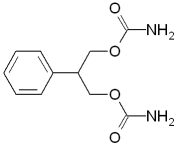Patients taking the anti-epilepsy drug Felbatol may develop acute liver failure, the drug's manufacturer, Carter-Wallace Inc., warned in a "Dear Doctor" letter to 260,000 physicians Sept. 21. These patients should contact their doctors as soon as possible about testing for liver problems.
FDA recommended that the letter be sent after receiving reports that 10 people taking Felbatol (felbamate) developed acute liver failure. At press time, four of these patients had died, and one survivor required a liver transplant. The patients, ages 2 to 28 years old, had been taking Felbatol for 14 to 257 days when liver failure was detected. Most patients had also been taking other anti-epileptic drugs.
In the letter, Carter-Wallace advised doctors to:
* not give Felbatol to patients with preexisting liver disease
* test patients for liver function before beginning Felbatol treatment
* monitor liver function with weekly blood tests during treatment
* take patients off Felbatol if liver problems are found.
Carter-Wallace had advised doctors two months earlier to restrict Felbatol use because 21 people taking it had developed aplastic anemia, a rare, frequently fatal disease in which the bone marrow stops making blood cells, and three had died. The company amended the drug's labeling, advising doctors to limit its use to patients whose epilepsy does not respond to alternative treatments and is so severe that the benefits outweigh the risks; 10,000 to 12,000 such patients remain on the drug.
FDA's Peripheral and Central Nervous System Drugs Advisory Committee met in September and recommended keeping the drug available for this limited population, adding information on the risk of liver disease to the labeling, and including a patient information sheet.
Felbatol was approved in August 1993 for partial seizures in adults and for Lennox-Gastaut syndrome, a serious form of childhood epilepsy. During the clinical trials, no cases of aplastic anemia or liver failure were reported.
COPYRIGHT 1994 U.S. Government Printing Office
COPYRIGHT 2004 Gale Group



